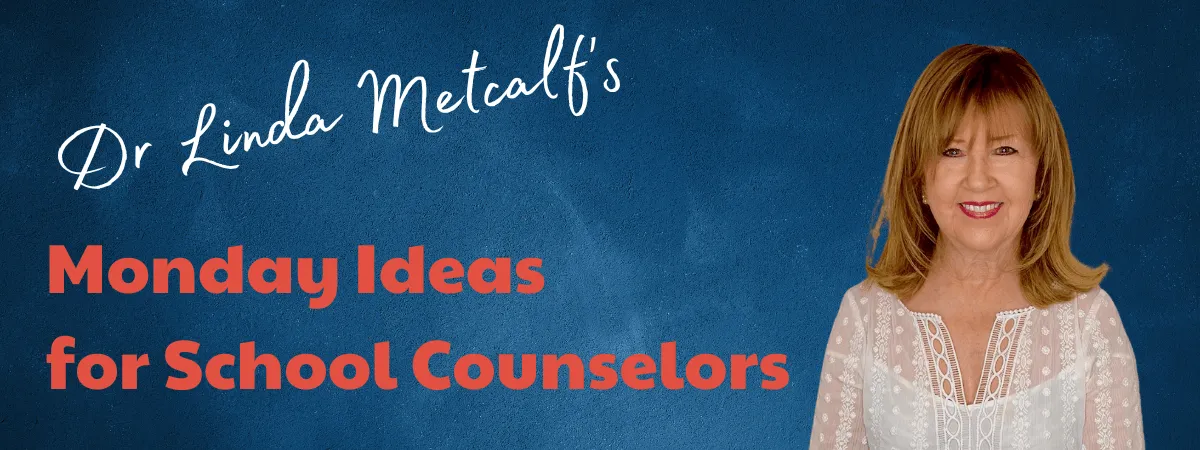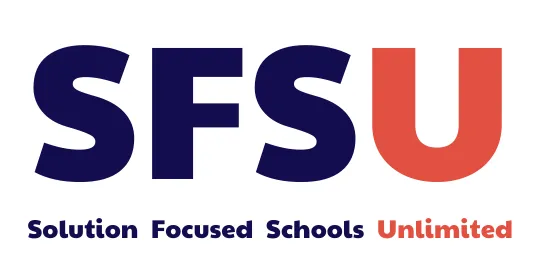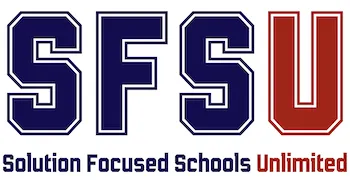
Monday Ideas for School Counselors
Weekly articles for school counselors with ideas on how to resolve typical school situations with students, teachers and parents using the solution focused approach.

From Threat to Strengths: Diminishing the Possibility of School Violence
A “scary kid” came to our clinic last week.
At age 12, this student had threatened to bring a gun to school the next day at his school and kill another student.
The child was suspended and the parents, having never seen that side of their child, brought him to counseling.
I was going to work with a student intern who was very concerned and admit I was prepared to meet an angry child, which I tried my best to put aside. When I first saw the child with his father, the father’s arm was around the child as they were walking down the hallway. My impression changed. I greeted the student and father and they sat down. The child immediately put his head into the father’s arm and pulled his hoodie over his face.
The father said to him, “It would be good if you talked this time.”
I learned this was the child’s first altercation at school. The father and mother were desperate to find out why the child made the threat. There was no gun at home. I asked the best hopes question and the father said he just wanted his child to talk about what was done and figure out what to do next.
So, to figure out what to do next, I went a different direction.
LM: “Tell me, you said that this was Ryan’s first altercation. Was this action like the Ryan you know and love? “
Dad: “No, he is not at all a child who ever threatened anyone, and he has a brother who really teases him.”
LM: “So, tell me can you share some *wonderfulnesses about Ryan?”
The child looked up, pushed back his hoodie and looked at his father, who then told me about several assets that Ryan had:
He was always encouraging others to take care of themselves, especially mom.
He was empathetic.
He was patient with his older brother
He is a good helper.
At that point Ryan started smiling and I asked him to help me with the list, which he did:
I know how to pay attention.
I know how to give my brother some slack.
I know how to ignore and block things out.
If something is hard, I find a way through.
I think I am a pretty good team mate.
I get into the “learning mode” easily
I said that I was rather stumped because it looked like a very different Ryan was at school on that day when the threat was made. The father agreed. “That was not the Ryan I know.” I looked at Ryan and asked what the day would have gone like if he had been the Ryan that his father knew… the Ryan with the list of assets.
Ryan: “It would have been a very different day.”
LM: “OK. You know, these assets that your Dad said you had, what kinds of skills would you need to really put them into place at school, someday when you go back:
Ryan: “I will need to learn to walk away.”
LM: “So, the “walking away skill.” What else?”
Ryan: “I usually can cancel things out at home when they bug me, so I need to cancel at school tool.
LM: “So, a “Cancel stuff out skill.” What else?”
Dad: “He always knows what we need at home. He needs that skill at school.”
LM: “What do you think?”
Ryan: “Sure.”
LM: “So, the “knows what others need skill.”
Ryan: “Yeah.”
Until then, I asked the father to watch out for the assets and skills that Ryan showed at home and other places until he went back to school. I looked at Ryan and asked him to double down and show those skills when he could, practicing them wherever he went.
He nodded.
I also mentioned that if Ryan would be okay with it, I would like to go to school with him when he returned to support him and share his plans with his teachers.
After they left, I thought about how different that session could have gone if we had only focused on the threat Ryan had made that day. While it is always important to be very cautious about any threat made, and, follow policy, how we process through it later so that we engage a student to see another strategy is vital.
The solution focused approach and, narrative approach, which I used with Ryan, seemed to bring back to life the Ryan that had been dominating his life up until that one day when he made the threat. While we should always be cautious about students that make threats, by bringing out the assets of the student from other times and places, we can create a new discourse that is supportive to using familiar assets, along with values and hopefully move away from those threats reoccurring again.
At age twelve, Ryan was able to articulate who he was at home quite well and when we talked about a preferred future, where he took those assets to school in the future, he then came up with which skills he could use.
I will keep you posted on how things go☺
*The word, “wonderfulnesses” came from the book, “Narrative Therapy in Wonderland: Connecting with Children’s Imaginative Know-How.” Epston, D., Marsten, D. and Markham, L. Norton, 2016.

Practical tools and strategies for school counselors to help students achieve their goals
Practical tools and strategies for school counselors to help students achieve their goals
© 2025 Solution Focused Schools Unlimited LLC


